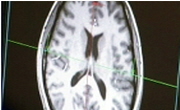김수영의 시론은 시 쓰기의 방향을 찾기 위한 모색의 과정에서 얻어진 것이다. 4·19 혁명 이후 그의 시론은 더욱 정밀해졌으며, 「꽃잎」 연작과 「풀」 등의 작품을 통하여 자신의 시론을 ...
http://chineseinput.net/에서 pinyin(병음)방식으로 중국어를 변환할 수 있습니다.
변환된 중국어를 복사하여 사용하시면 됩니다.
- 中文 을 입력하시려면 zhongwen을 입력하시고 space를누르시면됩니다.
- 北京 을 입력하시려면 beijing을 입력하시고 space를 누르시면 됩니다.
부가정보
국문 초록 (Abstract)
‘새로움-자유’라는 김수영의 시학과 윤리는 시적 주체가 ‘모름’을 긍정 및 수용하는 과정을 통해 시 작품으로 구체화된다. 「꽃잎」 연작에서 ‘모름’이란 무능의 표지가 아니다. 시적 주체는 ‘모름’을 혁명적 계기로 삼아 직관과 진리를 선취하려는 윤리적 운동을 수행한다. ‘모름’의 역량이 「꽃잎」 연작의 해석을 통해 드러난다면, 그러한 윤리적 ‘모름’의 지향인 ‘무한대의 혼돈’에 대한 시적 인식은 「풀」의 운동성에 접목되어 있다. 격렬한 바람 앞에서 바람과 풀 사이의 인과적 운동은 선후를 파악하기 어려운 ‘혼돈’의 양상으로 드러난다. 「풀」은 ‘바람-풀’의 인과적 움직임마저 혼란해지는 극한의 상황을 그림으로써 풀의 운동성이 바람의 운동성을 초과하는 순간을 포착해낸다.
김수영의 시론은 시 쓰기의 방향을 찾기 위한 모색의 과정에서 얻어진 것이다. 4·19 혁명 이후 그의 시론은 더욱 정밀해졌으며, 「꽃잎」 연작과 「풀」 등의 작품을 통하여 자신의 시론을 작품으로 구체화하였다. 김수영 시학의 자장 안에서 ‘새로움’은 시가 되는 언어와 시가 되지 않는 언어를 가르는 기준 자체였다. 그러한 ‘새로움의 시학’은 김수영의 「시여, 침을 뱉어라」 등의 산문을 통해 ‘모호성’ ‘무한대의 혼돈’ ‘미지’ 등의 단어 등으로 표현되어 있다. 흔히 ‘온몸의 시학’으로 불리는 그의 시론은 시의 정신이 ‘모호성’을 긍정하고 수용함으로써 ‘무한대의 혼돈’이라는 ‘미지’ 상태로 나아가는 과정으로 요약될 수 있다. 이러한 과정은 절대적 자유에 근거하여 새로움 자체를 문제 삼으려는 시 정신의 윤리적 운동과 겹쳐 있다.
‘새로움-자유’라는 김수영의 시학과 윤리는 시적 주체가 ‘모름’을 긍정 및 수용하는 과정을 통해 시 작품으로 구체화된다. 「꽃잎」 연작에서 ‘모름’이란 무능의 표지가 아니다. 시적 주체는 ‘모름’을 혁명적 계기로 삼아 직관과 진리를 선취하려는 윤리적 운동을 수행한다. ‘모름’의 역량이 「꽃잎」 연작의 해석을 통해 드러난다면, 그러한 윤리적 ‘모름’의 지향인 ‘무한대의 혼돈’에 대한 시적 인식은 「풀」의 운동성에 접목되어 있다. 격렬한 바람 앞에서 바람과 풀 사이의 인과적 운동은 선후를 파악하기 어려운 ‘혼돈’의 양상으로 드러난다. 「풀」은 ‘바람-풀’의 인과적 움직임마저 혼란해지는 극한의 상황을 그림으로써 풀의 운동성이 바람의 운동성을 초과하는 순간을 포착해낸다.
다국어 초록 (Multilingual Abstract)
Kim Soo-young’s poetics and ethics of ‘newness-freedom’ are embodied in poetry through the process in which the poetic subject affirms and accepts ‘not knowing’. In the Petals series, ‘not knowing’ is not a sign of incompetence. The poetic subject uses ‘not knowing’ as a revolutionary opportunity to perform an ethical movement to preempt intuition and truth. If the capacity of ‘not knowing’ is revealed through the interpretation of the Petals series, the poetic recognition of ‘infinite chaos’, which is the direction of such ethical ‘not knowing’, is grafted onto the mobility of Grass. In the face of a fierce wind, the causal movement between ‘wind’ and ‘grass’ is revealed as an aspect of ‘chaos’ in which it is difficult to determine the order.
Kim Soo-young’s poetic theory was obtained in the process of searching for the direction of writing poetry. After the April 19 Revolution, his poetic theory became more precise, and he concretized his poetic theory into works such as the Petals seri...
Kim Soo-young’s poetic theory was obtained in the process of searching for the direction of writing poetry. After the April 19 Revolution, his poetic theory became more precise, and he concretized his poetic theory into works such as the Petals series and Grass. In the field of Kim Soo-young’s poetics, “newness” was the criterion itself that distinguished between language that could be poetry and language that could not be poetry. Such ‘poetics of newness’ is expressed in Kim Soo-young’s prose with words such as “ambiguity,” “infinite chaos,” and “unknown.” His poetic theory, often called “poetics of the whole body,” can be summarized as the process in which the spirit of poetry affirms and accepts “ambiguity” and moves toward the “unknown” state of “infinite chaos.” This process overlaps with the ethical movement of the poetic spirit that seeks to question newness itself based on absolute freedom.
Kim Soo-young’s poetics and ethics of ‘newness-freedom’ are embodied in poetry through the process in which the poetic subject affirms and accepts ‘not knowing’. In the Petals series, ‘not knowing’ is not a sign of incompetence. The poetic subject uses ‘not knowing’ as a revolutionary opportunity to perform an ethical movement to preempt intuition and truth. If the capacity of ‘not knowing’ is revealed through the interpretation of the Petals series, the poetic recognition of ‘infinite chaos’, which is the direction of such ethical ‘not knowing’, is grafted onto the mobility of Grass. In the face of a fierce wind, the causal movement between ‘wind’ and ‘grass’ is revealed as an aspect of ‘chaos’ in which it is difficult to determine the order.
동일학술지(권/호) 다른 논문
-
- 고려대학교 국제한국언어문화연구소
- 이진오
- 2025
- KCI등재
-
- 고려대학교 국제한국언어문화연구소
- 김여주
- 2025
- KCI등재
-
한국인의 제스처와 시선 정보에 관한 연구 - 체계기능언어학의 멀티모달 담화분석(SFL-MDA)에 기반하여
- 고려대학교 국제한국언어문화연구소
- 한정한
- 2025
- KCI등재
-
고급 교양한국어 수업에서의 플립드 러닝 적용과 학습자 인식 연구
- 고려대학교 국제한국언어문화연구소
- 심재경
- 2025
- KCI등재





 KCI
KCI






